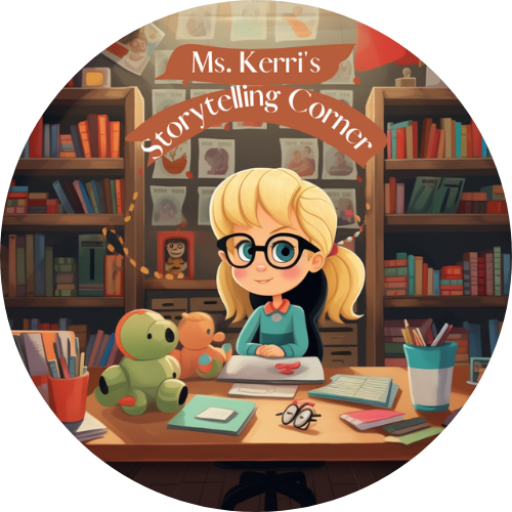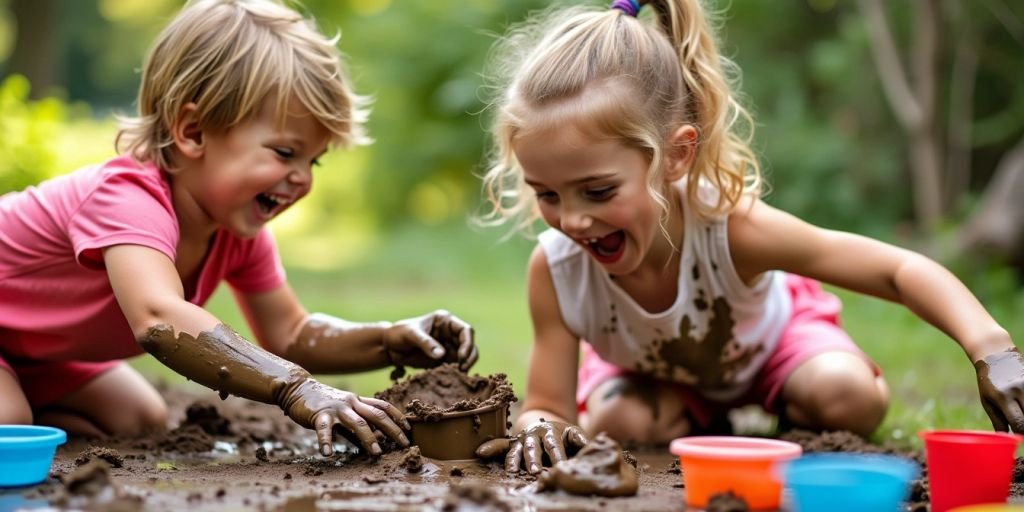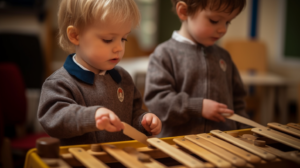Sensory play is an essential tool for fostering creativity, problem-solving skills, and emotional development in young learners.
In my experience, setting up sensory bins filled with materials like rice, beans, and tiny toy animals has always been a hit with young learners. The children dive right in, exploring the textures and sounds, and they often get lost in the discovery process. I’ve seen how these activities spark curiosity, with kids excitedly sharing what they find and creating their own imaginative play scenarios.
Even the quietest children become more engaged as they interact with the sensory materials, demonstrating how powerful hands-on, sensory experiences can be in fostering creativity and problem-solving.
Here are eight engaging sensory activities designed to inspire curiosity and imaginative thinking:

Water Play: Dive into Discovery
Set up a tub or basin filled with water and provide items like cups, containers, and water-safe toys. Encourage children to:
- Experiment with floating and sinking by using different objects.
- Practice pouring and measuring, enhancing fine motor skills.
- Splash and play to explore the sensory properties of water.
This activity not only entertains but also builds an understanding of cause and effect while promoting sensory exploration.
Ice Play: Unearth Frozen Treasures
Freeze small toys or trinkets inside ice cubes and let children release them using warm water, salt, or gentle tapping. This activity is both fun and educational, teaching:
- Patience and problem-solving as they figure out how to free the objects.
- Science concepts like melting and temperature change.
- Fine motor skills through precise handling.
The element of surprise in discovering hidden treasures adds an exciting twist!
Shaving Cream Exploration: Messy and Magical
Spread a layer of shaving cream on a tray or tabletop and let children explore its soft, fluffy texture. They can:
- Draw shapes or write letters, promoting early literacy.
- Mix in food coloring or glitter for added sensory appeal.
- Engage in open-ended play, stimulating creativity.
This tactile activity is great for sensory engagement and introduces basic pre-writing skills.
Sensory Bins: A World of Textures
Fill a bin with materials like rice, beans, or sand and add small toys, spoons, and scoops for digging and sifting. Children can:
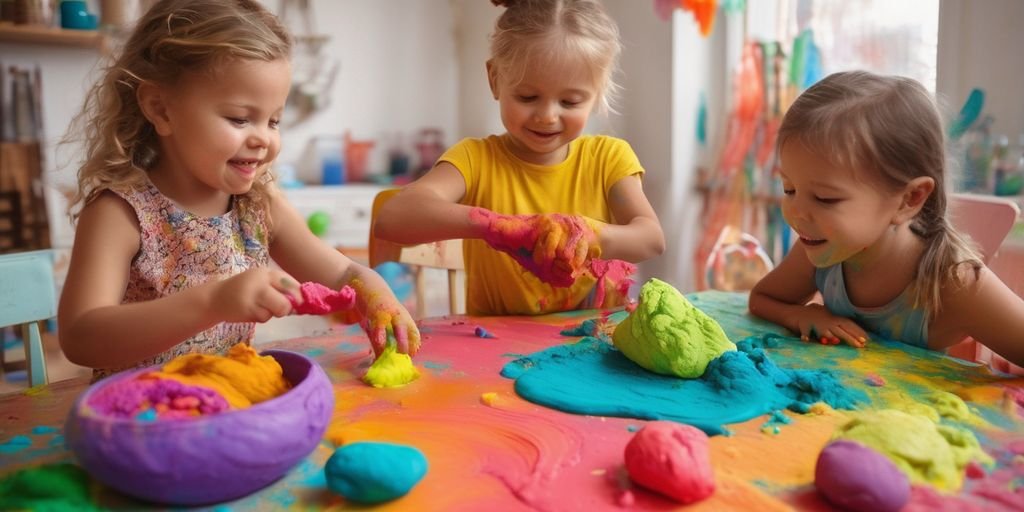
- Discover hidden objects, sparking curiosity and imaginative play.
- Develop hand-eye coordination by scooping and pouring.
- Explore textures and sounds, heightening sensory awareness.
This open-ended activity encourages exploration and independent learning.
Nature Exploration: Hands-On Learning from the Outdoors
Take a nature walk and collect items like leaves, rocks, pinecones, and sticks. Back at home or school, provide a space for sensory exploration where children can:
- Feel different textures, comparing rough, smooth, or soft surfaces.
- Sort and classify materials, fostering organizational skills.
- Engage in creative play, such as building or crafting with natural objects.
This activity connects children to their environment and inspires a love for nature.
Bubble Wrap Fun: Popping with Purpose
Hand children some bubble wrap for a fun and satisfying sensory experience. They can:
- Pop bubbles while practicing finger strength and dexterity.
- Count the pops for a math-related twist.
- Create art by using bubble wrap as a stamping tool with paint.
Simple yet effective, this activity combines sensory play with creative and educational opportunities.
Oobleck Creation: Explore Science Through Play
Mix cornstarch and water to make oobleck, a substance that acts like both a liquid and a solid. This hands-on activity lets children:
- Experiment with texture, feeling its unique properties.
- Learn basic science concepts about states of matter.
- Engage in messy, imaginative play, such as pretending oobleck is mud or alien slime.
Oobleck is an exciting way to combine sensory exploration with STEM learning.
Sensory Bottles: Calm and Captivate
Create sensory bottles by filling clear bottles with water, oil, glitter, and small objects. These mesmerizing tools can:
- Teach about density and mixing as children observe the separation of materials.
- Provide a calming effect, helping children self-regulate emotions.
- Spark creativity, especially when children design their own bottles.
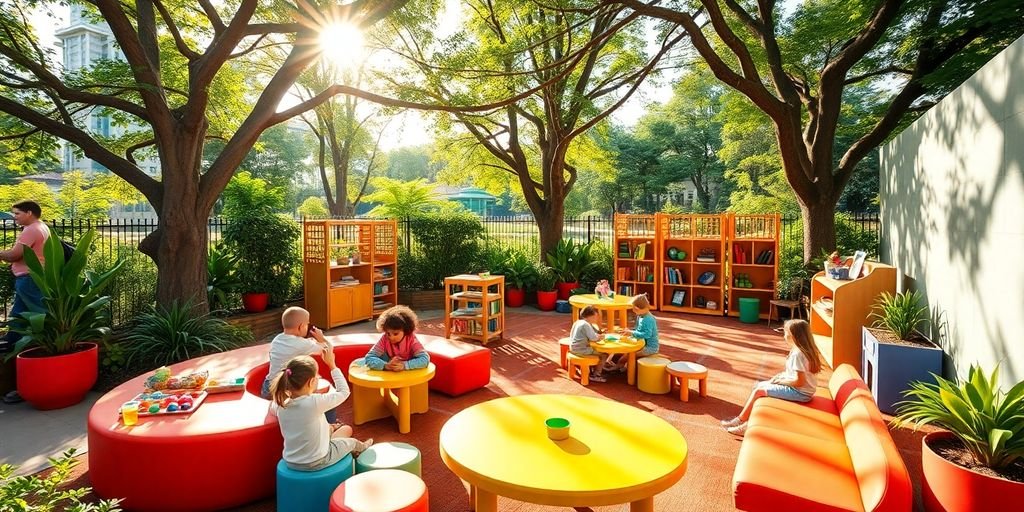
Perfect for quiet play or as a soothing activity, sensory bottles are easy to customize for various interests.
Why Sensory Play Matters
Sensory play engages multiple senses simultaneously, promoting cognitive development, emotional growth, and creativity. These activities encourage hands-on learning, foster curiosity, and provide opportunities for problem-solving—all essential skills for young learners. By incorporating these sensory ideas, caregivers and educators can create joyful and meaningful experiences that inspire discovery and imagination.


Ms. Kerri’s Corner provides a exciting virtual space for preschool learning. Through a variety of engaging activities, she exposes young minds to early math, literacy, science and social-emotional skills in a developmentally appropriate way. Centers for blocks, art, books and music allow children to explore hands-on learning at their own pace. Guided lessons subtly introduce number sense, letter sounds and narrative thinking. Careful observation gives insight into each child’s progress across domains. Viewers are also invited to participate, reinforcing that their ideas are valued. By making learning fun yet purposeful, Ms. Kerri lays the groundwork for future academic success while fostering creativity and imagination. Her program offers preschoolers valuable screen-based learning experiences.
